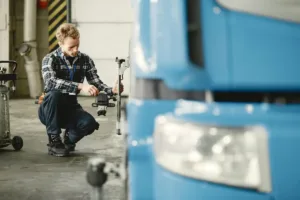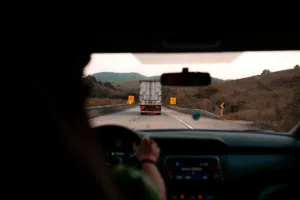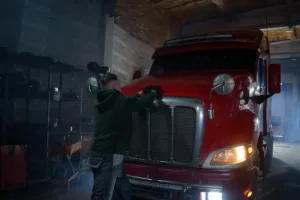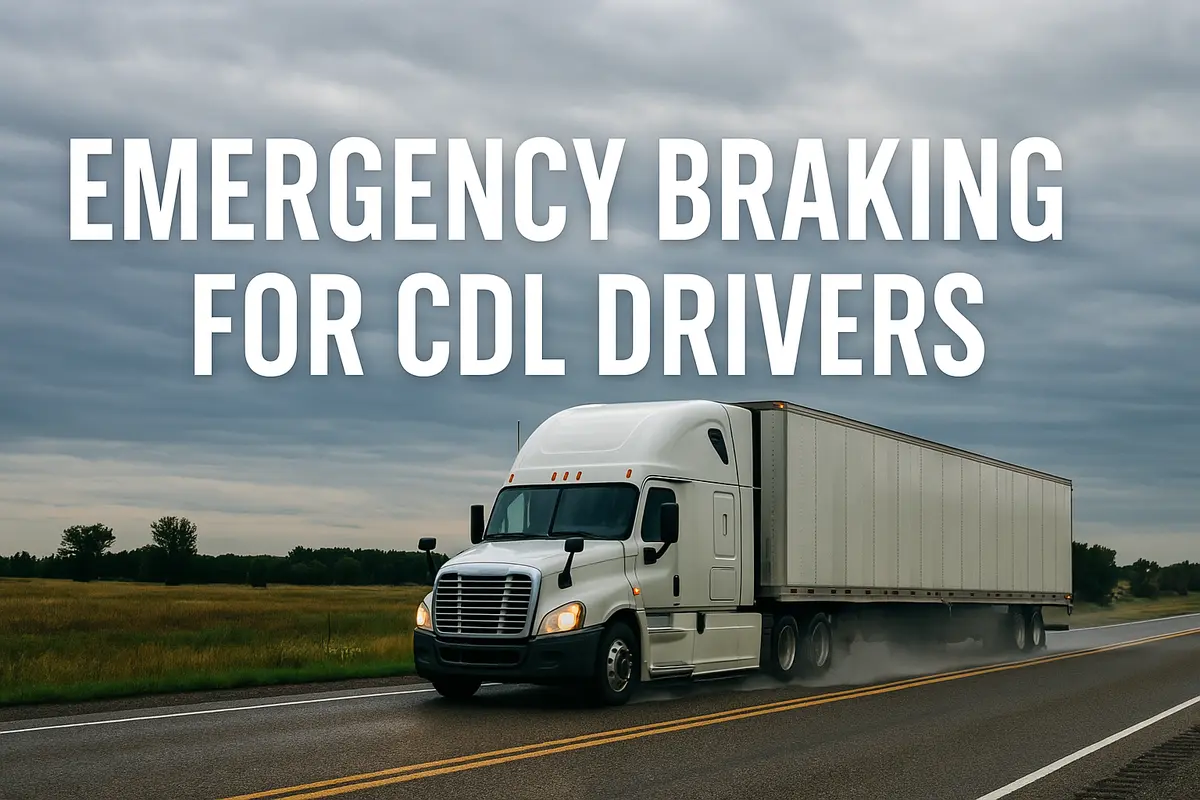When you’re behind the wheel of 80,000 pounds of steel and cargo, a split-second decision can change everything. One wrong move in an emergency—and the results can be catastrophic.
So, what does emergency braking mean CDL? It refers to how commercial drivers react in life-threatening scenarios using specific brake techniques designed for heavy-duty vehicles. Mastering this skill is a legal requirement, a safety priority, and a mark of true professional driving.
At Drivers Files Online, we help CDL carriers maintain not just driver knowledge—but documented compliance with DOT braking standards, inspection reports, and emergency readiness across your entire fleet.
👉 Need to manage CDL compliance efficiently? Get started now with Drivers Files Online.
What Does Emergency Braking Mean in CDL?
Emergency braking CDL terms refer to controlled stopping procedures used when a sudden hazard appears and a standard stop isn’t safe or possible. This includes:
- Stab braking
- Controlled braking
- Emergency pull over procedures
- System-assisted braking
Unlike everyday braking, CDL emergency braking requires faster decision-making, more distance, and a clear understanding of the truck’s weight, speed, and brake system.
Drivers must demonstrate this knowledge during the emergency stop CDL test and understand when and how to apply it on the road.
Understanding the Brake Systems Behind CDL Emergency Braking

According to the FMCSA safety planner, there are three main types of braking systems found in commercial motor vehicles:
1. Service Brake System
This is the primary system activated by pressing the brake pedal. It includes air brakes on all axles and is the foundation for both routine and emergency stops.
2. Emergency Brake System
Engaged when the service brakes fail, this system uses spring brakes to safely stop the vehicle.
3. Parking Brake System
Though mainly used when parked, it also plays a role in emergency control and must be functional during inspections.
With multiple systems in play, CDL drivers must be trained to identify issues during routine checks. That’s why tools like the CDL pre-trip inspection checklist are so essential.
CDL Emergency Stop Procedure: The Right Way to React

The CDL emergency stop procedure is more than a set of actions—it’s a vital response that can save lives. A professional driver must:
- Recognize the hazard and scan traffic.
- Apply appropriate braking—stab or controlled.
- Engage hazard flashers.
- Execute the emergency pull over procedure CDL guidelines call for.
- Deploy emergency equipment if stopped.
Each of these steps is evaluated on the road and during CDL testing. Knowing how and when to perform them ensures safe operation and DOT compliance.
Emergency Stab Braking is When You…
Emergency stab braking is when you train to apply full brake pressure rapidly, release once wheels lock, then reapply. This cycle prevents skidding when ABS isn’t available.
This differs from controlled braking, which applies steady pressure to avoid wheel lock. Both require precision, and knowing when to use which method can determine the outcome of an emergency.
Why Make Emergency Plans When You See a Hazard CDL?
When asking why make emergency plans when you see a hazard CDL, the answer lies in proactive safety. Planning:
- Allows smoother lane exits.
- Reduces panic reactions.
- Gives drivers time to alert others.
- Minimizes collision risk.
When drivers anticipate danger, they rely less on sudden maneuvers and more on calculated responses. It’s a mark of professionalism that also improves CSA scores and safety ratings.
How Can You Test the Trailer Emergency Brakes for CDL?

A crucial question for drivers is how can you test the trailer emergency brakes CDL? This test is typically done during pre-trip inspections:
- Charge the trailer air system.
- Pull out the trailer air supply valve.
- Gently pull against the trailer.
- Brakes should hold—if not, there’s a failure.
DOT inspectors will check this. Regular testing and accurate records—like those documented using inspection forms—can prevent violations and keep your fleet in service.
CDL Emergency Equipment: Required and Ready
CDL drivers must carry certain equipment at all times to remain compliant. CDL emergency equipment includes:
- Three reflective triangles
- A fire extinguisher
- Spare fuses or warning devices
During an emergency stop CDL test, examiners may ask about this gear’s location and condition. It’s a routine part of inspections and a non-negotiable for safe driving.
How Drivers Files Online Helps Your CDL Fleet Stay DOT Compliant

Emergency braking starts behind the wheel—but staying compliant starts with documentation.
At Drivers Files Online, we support your safety and compliance needs through powerful, easy-to-use digital tools that help you:
- Digitally store driver records, brake inspection reports, and emergency stop procedures
- Receive real-time alerts for certificate renewals, CDL expiration dates, and medical card deadlines
- Collect driver info through online applications, using our Online Driver Application feature
- Track performance using DOT history through DOT PSP Reports
- Verify driver qualifications instantly with State Motor Vehicle Reports
- Get compliance support through our Managed Services, including audit readiness help
- Scale your plan to your fleet with flexible pricing options
💻 Simplify how you manage safety procedures and inspection readiness—create your account today.
Frequently Asked Questions About Emergency Braking in CDL
What does emergency braking mean CDL?
It refers to specialized braking techniques CDL drivers use during sudden hazards, including stab braking, controlled braking, and emergency stops.
What is the CDL emergency stop procedure?
It involves controlled braking, hazard signaling, safe pull-over, and deploying warning triangles or flares.
Emergency stab braking is when you CDL…
Apply the brakes firmly, release once wheels lock, and reapply. It’s used when ABS isn’t present.
Why make emergency plans when you see a hazard CDL?
Planning gives drivers more time and space to react safely and prevent accidents.
How can you test the trailer emergency brakes CDL?
Charge the trailer system, engage the trailer valve, and gently tug the vehicle. The trailer should resist movement.
What is CDL emergency equipment?
Required equipment includes three reflective triangles, a fire extinguisher, and spare fuses or lights.
What’s included in the emergency stop CDL test?
Exam questions and driving tests that assess braking methods, response time, and use of emergency equipment.
Where can I store CDL emergency documentation and inspections?
You can store everything securely with Drivers Files Online, including brake inspections, driver records, and compliance forms.
Disclaimer
This blog is intended for general informational purposes only. For the most up-to-date regulations on CDL emergency braking, always refer to the FMCSA official guidelines or consult a certified CDL trainer.
